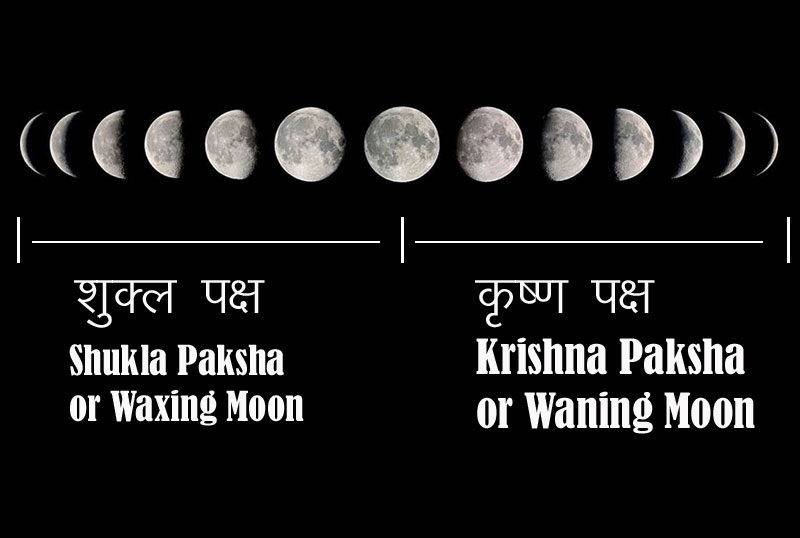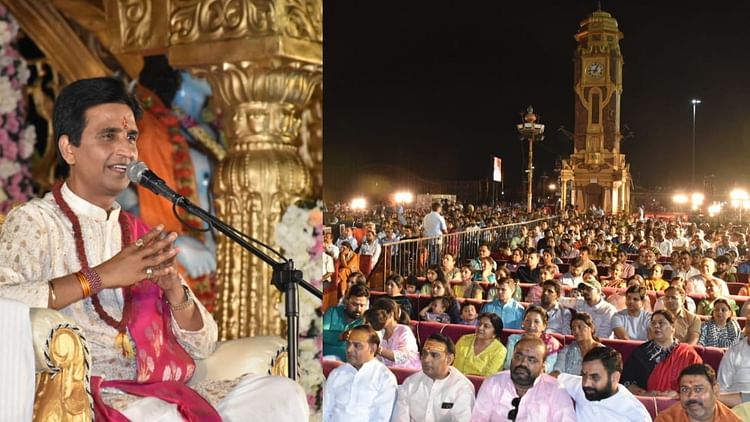
Shukla Paksha, also known as the Waxing Phase or Bright Fortnight, is a term used in Hindu lunar calendar system, specifically in relation to the phases of the moon. The lunar month in the Hindu calendar is divided into two halves: the Shukla Paksha and the Krishna Paksha.
Shukla Paksha refers to the period starting from the day after the new moon (Amavasya) and lasting until the full moon (Purnima). During this phase, the moon appears to be gradually increasing in size, becoming brighter each day. It is considered an auspicious time in Hindu culture, and many festivals, ceremonies, and rituals are observed during this period.
The word “Shukla” means bright or white, indicating the increasing brightness of the moon during this phase. The Shukla Paksha is associated with positive energy, growth, and prosperity. It is considered an ideal time for starting new ventures, performing spiritual practices, and engaging in auspicious activities.
In contrast, the Krishna Paksha refers to the period starting from the day after the full moon (Purnima) and lasting until the new moon (Amavasya). During this phase, the moon appears to be gradually decreasing in size, becoming darker each day.
Both the Shukla Paksha and Krishna Paksha are important in the Hindu calendar as they mark the waxing and waning cycles of the moon, influencing various aspects of religious and cultural practices.
Sukla paksha is a Sanskrit term that refers to the 14-day period of the waxing moon in each lunar month in the Hindu calendar. The 14-day period of the waning moon is called Krishna paksha. The full moon (purnima) and the new moon (amavasya) complete the 30-day lunar month. Some consider purnima to be the final day of sukla paksha, making it a 15-day period; likewise, amavasya would the final day of Krishna paksha.
As the bright phase, sukla paksha is considered the best time for beginning a task, starting a business, and for growing on a spiritual, mental or physical plane. It is for this reason that many Hindu festivals are held during sukla paksha, among them the seasonal nine-day Navratri festivals, including Chaitra Navratri and Ashvin Navratri.
In Indian astrology, it is believed that those born during sukla paksha have a desire to learn, have a pleasant personality, and are responsible and hardworking.
What is Krishna Paksha
The correct term is “Krishna Paksha.”
Krishna Paksha, also known as the Waning Phase or Dark Fortnight, is one of the two halves of the lunar month in the Hindu calendar. It begins the day after the full moon (Purnima) and lasts until the new moon (Amavasya). During this phase, the moon appears to be gradually decreasing in size and becoming darker each day.
The word “Krishna” means dark or black, signifying the decreasing brightness of the moon during this phase. Krishna Paksha is considered a time for introspection, letting go, and releasing. It is associated with the energy of introspection, purification, and spiritual practices.
Krishna Paksha is also significant for performing rituals and ceremonies related to ancestors, such as Pitru Paksha (a period dedicated to paying homage to ancestors). It is believed that during this phase, the energy is more conducive to connecting with and honoring departed souls.
Both the Shukla Paksha (Waxing Phase) and Krishna Paksha (Waning Phase) play important roles in the Hindu calendar, representing the waxing and waning cycles of the moon and influencing various religious and cultural practices throughout the lunar month.
Krishna Paksha is a term used in the Hindu lunar calendar to refer to the second fortnight of the lunar month, in which the moon is waning or fading. The first fortnight of the waxing or brightening moon is known as Sukla Paksha.
The name has Sanskrit roots, with krishna meaning “dark” and paksha meaning “side”. This refers to the fact it happens on the “dark side” of the full moon. Krishna Paksha is also sometimes called Vadhya Paksha.
Krishna Paksha is considered by some to be inauspicious or ashubh, because it is the period when the moon loses light. On the other hand, Sukla Paksha is regarded as auspicious or shubham, as it is the brightening moon is said to be favourable to growth and development on all planes of existence – mental, physical and spiritual.
However, some interpret the astrology as meaning that the period from the 10th day of Sukla Paksha to the 5th day of Krishna Paksha is most auspicious. During this time the moon is at its brightest.
These considerations may come into play for followers of Hindu astrology when they are choosing special dates such as marriage date, buying a house or naming a new baby.














































